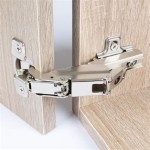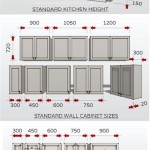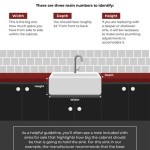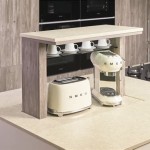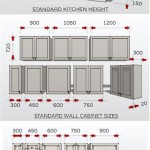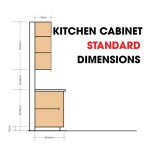Can You Paint Laminate Kitchen Cabinets That Are Varnished?
Laminate kitchen cabinets offer an affordable and durable alternative to solid wood. However, over time, the finish can become dated or show wear and tear. Many homeowners consider painting as a cost-effective way to update their kitchen's appearance. Painting varnished laminate cabinets presents unique challenges compared to painting wood. This article explores the feasibility and process of painting varnished laminate kitchen cabinets.
Understanding Laminate and Varnish
Laminate is a synthetic material composed of multiple layers of paper and resin. It's durable, resistant to scratches and stains, and easy to clean. Varnish is a clear protective coating applied to surfaces, including laminate, to enhance its durability and sheen. The smooth, non-porous nature of both laminate and varnish makes it difficult for paint to adhere properly.
Challenges of Painting Varnished Laminate
The primary challenge in painting varnished laminate lies in achieving proper adhesion. The slick surface of the varnish prevents the paint from bonding effectively, leading to peeling and chipping over time. Additionally, insufficient preparation can result in an uneven finish and poor durability.
Key Steps for Painting Varnished Laminate Cabinets
Successfully painting varnished laminate cabinets requires meticulous preparation and the right materials. Skipping steps can compromise the final result and longevity of the paint job. The following steps outline the recommended process:
1. Cleaning and Degreasing
Thoroughly cleaning the cabinet surfaces is crucial for removing grease, grime, and any cooking residue. Use a strong degreasing cleaner specifically designed for kitchen surfaces. Rinse thoroughly and allow the cabinets to dry completely.
2. Sanding the Surface
Sanding creates a slightly rough surface, improving the adhesion of the primer. Use fine-grit sandpaper (150-220 grit) to lightly abrade the varnish and laminate without damaging the underlying material. Avoid excessive sanding, which can create unevenness.
3. Applying Primer
A specialized bonding primer formulated for slick surfaces is essential for painting varnished laminate. This type of primer enhances adhesion and creates a base for the topcoat to grip. Apply a thin, even coat of primer, allowing it to dry completely according to the manufacturer's instructions.
4. Applying the Topcoat
Once the primer is dry, apply a high-quality acrylic or enamel paint designed for cabinets. Multiple thin coats are preferable to one thick coat, which can crack or peel. Allow each coat to dry completely before applying the next. Consider using a paint sprayer for a smoother, more professional finish.
5. Sealing (Optional)
Applying a clear sealant after the final coat of paint can provide additional protection and durability, especially in high-traffic kitchen environments. Choose a sealant compatible with the chosen paint type.
Material Selection
Choosing the right materials is critical for a successful and long-lasting paint job. Opt for high-quality products specifically designed for laminate surfaces and kitchen environments. These include:
1. Degreasing Cleaner:
A heavy-duty degreaser effectively removes kitchen grease and grime, ensuring proper primer adhesion.
2. Sandpaper:
Fine-grit sandpaper (150-220 grit) is suitable for lightly roughening the surface without causing damage.
3. Bonding Primer:
A primer formulated for slick surfaces is essential for promoting adhesion between the laminate and paint.
4. High-Quality Paint:
Acrylic or enamel paints designed for cabinets offer durability and resistance to moisture and wear.
5. Sealant (Optional):
A compatible sealant provides added protection and durability.
Tips for Best Results
Following these tips can help ensure a successful and professional-looking paint job:
1. Proper Ventilation:
Ensure adequate ventilation during the painting process to avoid inhaling fumes.
2. Patience is Key:
Allow ample drying time between each coat of primer and paint for optimal adhesion and a smooth finish.
3. Light Sanding Between Coats:
Lightly sanding between coats with fine-grit sandpaper can improve the smoothness and adhesion of subsequent coats.
4. Use Quality Brushes and Rollers:
Invest in quality brushes and rollers designed for the chosen paint type for a smoother and more even application.

How To Paint Laminate Kitchen Cabinets Perfect Finish Tips

A Year In Review Of How I Painted My Laminate Cabinets With Two Methods

How To Paint Laminate Kitchen Cabinets Perfect Finish Tips

How To Paint Laminate Cabinets The Interiors Addict

How To Paint Laminate Cabinets Everything You Need Know

How To Paint Laminate Kitchen Cabinets Eatwell101

Painting Kitchen Cabinets Without Primer

How To Paint Laminate Cabinets The Interiors Addict

Painting Laminate Cupboards Crowies Paints

How To Paint Kitchen Cabinets Without Sanding Sustain My Craft Habit
Related Posts

